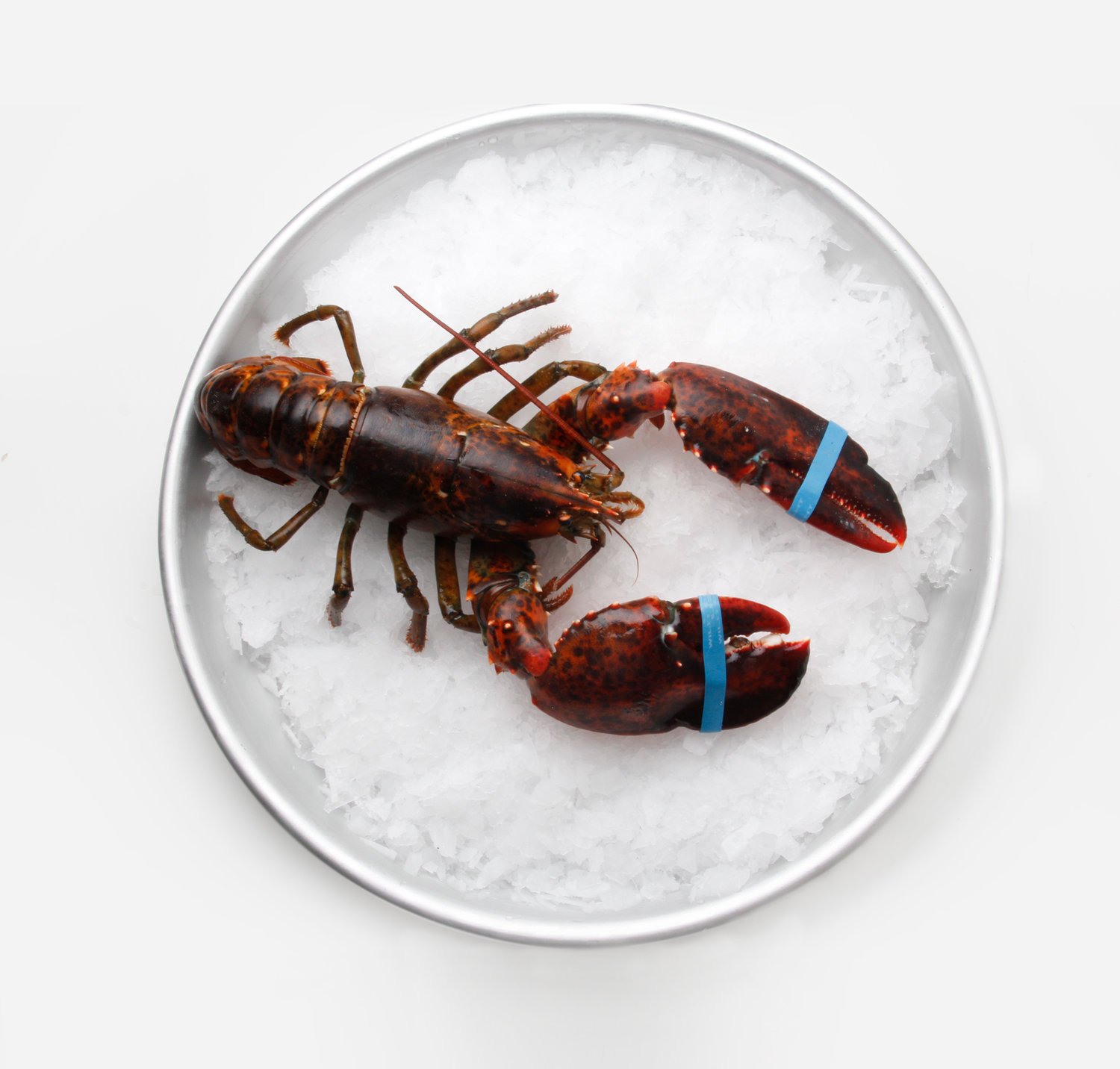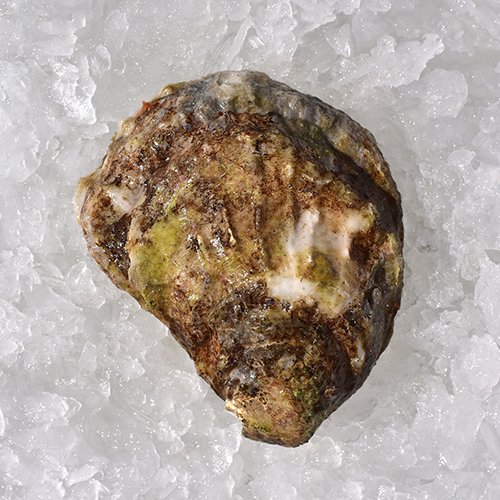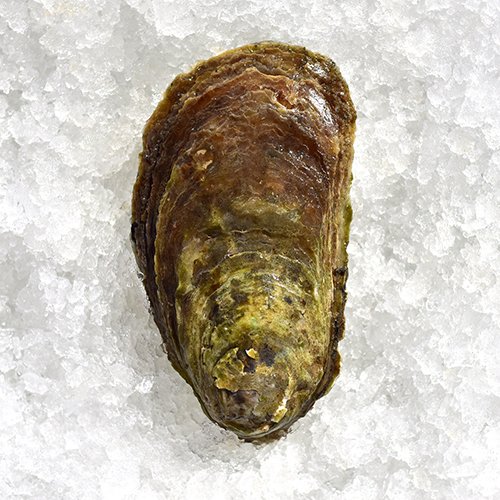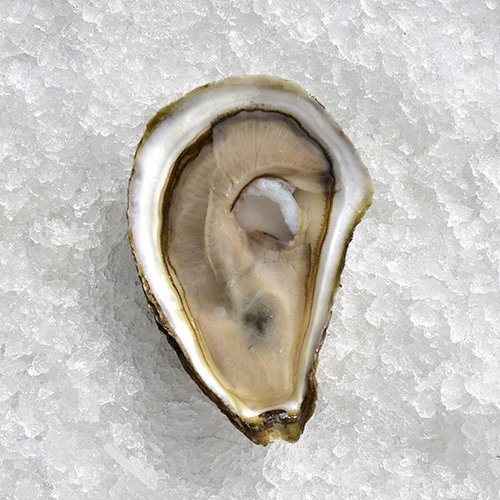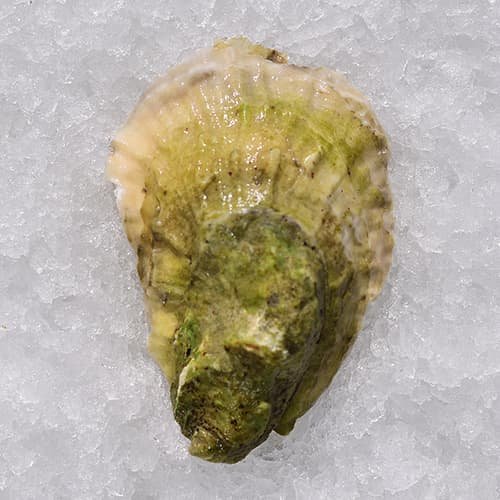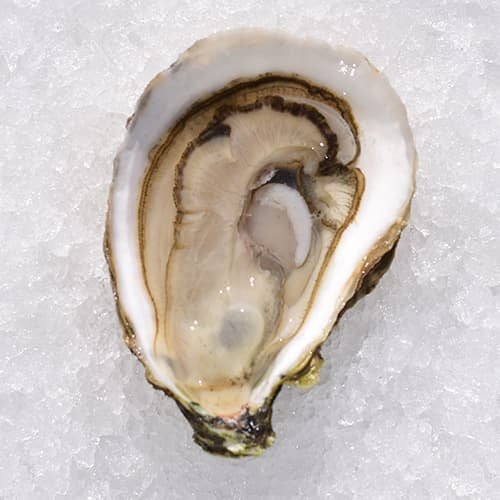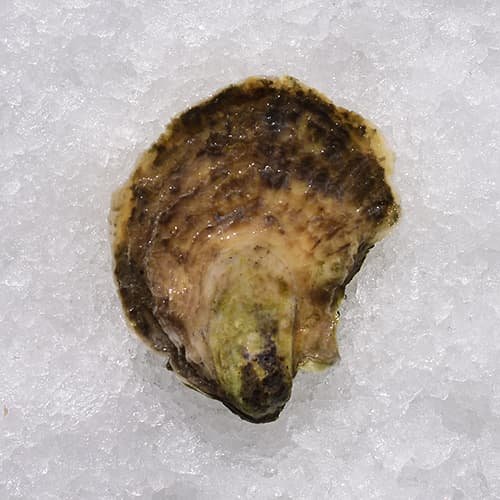Oyster Varieties
In order to eat them, you need to know how to shuck them. Check out our Shucking Kit.
Copps Island
norwalk, ConnecticutOur oysters are farmed and harvested in the wild by using traditional farming techniques on the renowned oyster beds of the Norwalk/Westport Island Chain where shallow waters, swift currents and sandy bottoms provide prime growing conditions. Our oysters are farmed on the sea floor in their natural environment, giving our oysters the best of both worlds - the robust qualities of a wild oyster and the sustainability of a farmed product. Our oysters are harvested daily and are famous for their unparalleled freshness, sweet briny flavor and plump meats.
Availability: Year-round
Size: Approx. 3.5 inches
Flavor: Sweet, slightly briny, plump
Shell Finish: Natural growing conditions give our oysters thick round shells with deep cups, a golden brown color and white interior shell.
White Rock
Norwalk, ConnecticutHand-selected, premium-grade oysters farmed and harvested in the wild by using traditional farming techniques on the renowned oyster beds of the Norwalk/Westport Island Chain. Smaller and slightly more uniform than the Copps Island Oysters, White Rocks are salty-sweet and a true delicacy.
Availability: Year-round
Size: Approx. 3 inches
Flavor: Salty-sweet, plump
Shell Finish: Small, uniform oysters with a deep cup, light brown exterior color, and white interior shell.
Mystics
Noank, ConnecticutHarvested in the pristine waters of Mystic, CT, our oyster beds are located at the mouth of the Mystic River, where nutrient-rich waters mix with the oceanic waters of Fishers Island Sound and the Atlantic Ocean. Mystics are a 100% sustainable product cultivated by Aeros Cultured Oysters, who have been producing some of the regions highest quality oysters for decades. A pioneer in the “cultured” method of farming oysters, Aeros is known for its revolutionary fusion of science and traditional oyster farming techniques that have shaped the oyster industry into what it is today.
Availability: Year-round
Size: Approx. 3.5 inches
Flavor: Balance of brine, sweetness and a hint of mineral
Shell Finish: Beautiful round shells with a green hue on the outside of the cupped shell. The inside shell is white, holding a nice, plump, creamy morsel of satisfaction.
Clam Varieties
In order to eat them, you need to know how to shuck them. Check out our Shucking Kit.
Little Neck
The smallest size of clam. Perfect on the half shell.
Availability: Year-round
Size: Approx. 2 inches across
Top Neck
Slightly larger than the Little Neck. Perfect on the half shell or for clams casino.
Availability: Year-round
Size: Approx. 2.5 inches across
Cherry Stone
Slightly bigger than the Top Neck. Use for stuffed clams or soups.
Availability: Year round
Size: Approx. 3.5 inches across
Lobster
Source: Long Island Sound & Maine
Availability: Year-round
Size: 1 1/4 lb to 1 1/2 lb

Interested in Wholesale?
Shucking Kit
Everything you need to get your Shuck on!
TutorialHow to Shuck an Oyster
Step 1
Place the oyster cup-side down on a sturdy surface (cutting board or table). For beginners, we recommend using a kitchen towel or a steel mesh glove while handling, for protection.
Step 2
Find the “hinge” at the bottom tip of the oyster that separates the two shells.
Step 3
Hold the oyster down firmly with your towel or glove. Take your knife and begin to wiggle with pressure where the hinge is located (remember to point your knife in a downward position – as opposed to flat – to avoid any accidents).
Step 4
Once the tip of the knife is under the hinge, turn it like a key to slightly pop the shell open.
Step 5
Scrape the knife along the TOP of the shell to separate the muscle. To serve the perfect-looking oyster, try not to chop the meat when following this step. When you remove the top shell, be sure to clean any grout or mud that may be alongside the inner edge of the bottom shell.
Step 6
The final step is to separate the oyster meat from the bottom shell by sliding your knife along the BOTTOM of the meat to cut the abductor muscle. Serve on a tray of ice with lemon, cocktail sauce, red vinegar or mignonette sauce, or simply enjoy the taste of the ocean and eat them raw.
TUTORIALHow to Shuck a Clam
Step 1
Using a dish towel or shucking glove, hold clam inside palm of your hand with hinge side between your thumb and index finger.
Step 2
Place knife along bill of the clam, on the wider part (never push knife, always squeeze the knife).
Step 3
Squeeze the knife with the same hand into the clam. Once knife is inserted, spin the knife slightly and turn like a key to pop open the shell. Slide knife along top of shell to cut muscle on other side of the shell.
Step 4
Break off top shell by rolling it off.
Step 5
Slide your knife both ways under the clam to release the muscle from the clam completely. Enjoy!
TUTORIALHow to Crack a Lobster
Step 1
First, grab the body with one hand and the tail with the other and twist to separate them. Then twist off the claws where they meet the body.
Step 2
For the tail, hold it and squeeze until it cracks along its length. Then pull it open to free the meat.
Step 3
Next, separate the knuckles from the claws. Carefully use your cracker to squeeze just below the pincers. Pop off the smaller pincer by prying it open side by side.
Step 4
Break open the claw shell and remove the meat. Use a cracker to break the knuckle shell all over and then use your fingers to free the meat.
Step 5
Pull of the body’s top shell, lifting from the tail end. Remove the green substance (tomalley).
Step 6
Snap the legs off one-by-one and use your teeth to chew the meat out.



